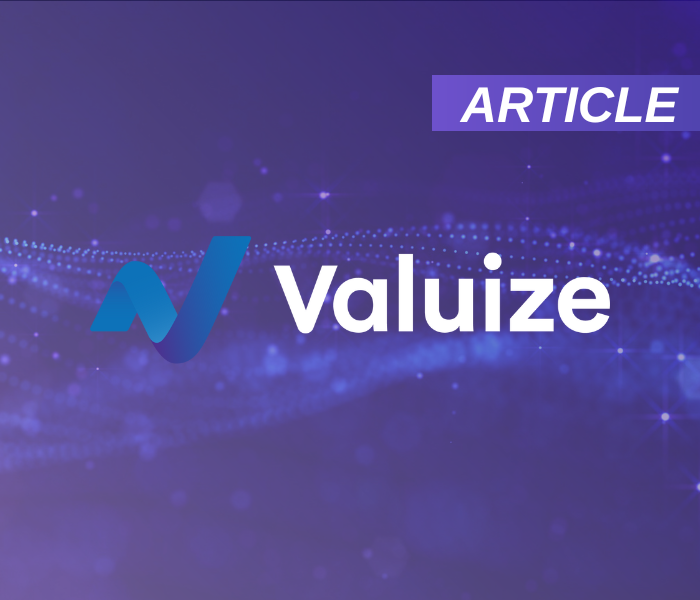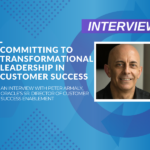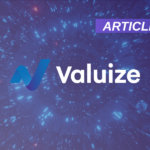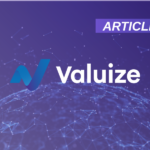In this article, we share some insights from our combined decades worth of experience in managing the Gainsight CS platform in companies of all sizes. Specifically, we break down the resourcing models needed for architecting, developing and administering the Gainsight CS platform based on the size of your Customer Success (CS) team. We explore the different roles within a CS operations team to support Gainsight, their responsibilities, and how these roles scale with the size of the CS organization. Additionally, we will detail the factors to consider when planning your Gainsight resourcing strategy.
Aligning Gainsight to Evolving Customer Success Needs
Customer Success (CS) teams are pivotal in driving customer adoption, retention and expansion. The dynamics and needs related to how CS teams achieve these outcomes evolve as CS organizations scale. This evolution impacts the role they play in the customer lifecycle and, therefore, leverage the Gainsight CS platform. In smaller CS orgs, CS professionals often wear multiple hats, managing a broad range of tasks from onboarding to support. As teams grow, roles (should!) become more specialized and deeply integrated with digital customer engagement models. This, in turn, drives the need for more dedicated and specialized CS Operations spanning strategy design, Gainsight architecture, Gainsight development, and product ownership. Proper Gainsight resourcing is critical to ensure these evolving needs are met efficiently, facilitating seamless translation of customer success strategy into data-driven insights and actions.
Here are the roles you need to consider having.
Gainsight Architect
Responsibilities:
- Overall system design
- Ensuring best practices
- Complex configuration
- Integration planning
- High-level troubleshooting
Skills Needed:
- Deep understanding of Gainsight capabilities
- Experience designing a System architecture
- Data modeling
- Integration strategies focussed on data analytics platforms
Why this role is Important:
The Gainsight Architect is responsible for the overall design and architecture of the system. This role requires a deep technical understanding and the ability to plan complex integrations. The Architect ensures that the system is built following best practices, which makes this role crucial for the long-term success and scalability of the Gainsight implementation.
Gainsight Developer
Responsibilities:
- Implementation of configurations
- Customizations
- Rule creation
- Report development
- Technical troubleshooting
Skills Needed:
- Technical skills in Gainsight configurations
- Experience in software development and/or implementation
- Potential scripting for integrations
Why this role is Important:
The Gainsight Developer focuses on the hands-on implementation and technical aspects of the Gainsight system. This role involves creating and maintaining configurations, rules, reports, and any other Gainsight feature making it essential for the day-to-day functionality of Gainsight. Developers also handle technical troubleshooting, which ensures the system runs smoothly.
Product Owner
Responsibilities:
- Aligning Gainsight features with business needs
- Prioritizing development work
- Stakeholder management
- Ensuring user adoption
Skills Needed:
- Strong understanding of CS operations
- Gainsight capabilities
- Project management
- Communication skills
- Experience in Product Ownership/Management
Why this role is Important:
The Product Owner bridges the gap between the technical team and business stakeholders. This role ensures that Gainsight features are aligned with business needs and priorities. The Product Owner manages stakeholders, drives user adoption, tracks and prioritizes Gainsight issues, and ensures that the system delivers value to the organization.
Recommended Gainsight Resourcing Based on CS Team Size
Small CS Teams (1-10 CS employees)
Description:
Small CS teams typically consist of a few dedicated CS professionals who handle multiple responsibilities. These teams are agile and can adapt quickly to changes but often lack specialized roles.
Resourcing Needs:
- Gainsight Architect: 1 part-time
- Gainsight Developer: 1 part-time (can also act as an Architect in very small teams)
- Product Owner: 1 part-time (likely someone from the CS team)
Medium CS Teams (11-50 CS employees)
Description:
Medium CS teams are more structured and may have dedicated roles for different functions within CS. These teams require more formal processes and coordination compared to small teams.
Resourcing Needs:
- Gainsight Architect: 1 full-time
- Gainsight Developer: 1 full-time*
- Product Owner: 1 part-time (can be a Product Owner with other responsibilities)
*If Digital CS is central to CS operations, add 1 Journey Orchestrator Admin part-time who focuses on the creation and maintenance of Digital Journeys.
Large CS Teams (51-200 CS employees)
Description:
Large CS teams have a clear division of roles and responsibilities. They handle a higher volume of customers and require robust processes and systems to manage operations effectively.
Resourcing Needs:
- Gainsight Architect: 1 full-time
- Gainsight Developer: 2 full-time
- Product Owner: 1 full-time (dedicated to aligning Gainsight with business needs)
Very Large CS Teams (200+ CS employees)
Description:
Very large CS teams are highly specialized and operate at scale. They require significant resources and sophisticated systems to manage complex CS operations across multiple regions or product lines.
Resourcing Needs:
- Gainsight Architect: 1-2 full-time
- Gainsight Developer: 3-4 full-time
- Product Owner: 1 full-time (possibly with a dedicated Gainsight team)
Resourcing Gainsight for Digital Customer Success (Digital CS)
As organizations scale, Digital Customer Success (Digital CS) becomes increasingly vital. Digital CS leverages automated processes and digital touchpoints to manage customer relationships at scale, ensuring personalized and proactive engagement without the need for a large team of CS managers. Implementing Digital CS effectively requires specific resources and expertise. Consider investing in this role as part of your team.
Journey Orchestrator Admin
Responsibilities:
- Design and manage automated customer journeys
- Implement triggers for engagement based on customer behavior
- Ensure consistency in messaging and touchpoints across digital channels
- Monitoring and Reporting on Key Journey Insights and trends
Skills Needed:
- Expertise in journey orchestration tools
- Understanding of customer behavior analytics
- Experience with digital communication strategies
Why this role is Important:
The Journey Orchestrator Admin focuses on creating and maintaining digital customer journeys. This role is crucial for organizations that aim to scale their CS efforts without a proportional increase in headcount. By automating routine engagements, this role ensures that customers receive timely and relevant communications, enhancing the overall customer experience.
Focusing Your Gainsight Team On The Right Goals Solutions
To maximize value from the Gainsight CS platform,there are three key goals that your Gainsight team should focus on:
Data Integration:
Data integration is often a complex process due to disparate systems and varying data formats. The Gainsight Architect plays a crucial role here by designing a robust data integration strategy that ensures seamless data flow between systems, maintaining data integrity and accessibility.
User Adoption:
User adoption can be a significant barrier if the system is perceived as too complex or not aligned with user needs. The Product Owner addresses this by working closely with stakeholders to prioritize features that enhance user experience and ensure that training and support resources are available to facilitate smooth adoption.
Alignment with Business Metrics:
Ensuring that Gainsight configurations drive insights into key business metrics, and hopefully improves them, is vital. The Gainsight Developer and Architect support this by implementing configurations and reports that provide actionable insights, while the Product Owner ensures continuous feedback loops with business stakeholders to keep the system aligned with evolving business needs.
Other Factors to Consider When Planning Your Gainsight Team
Being a Multi-Product Business
The more products your CS team manages , the more Gainsight expert capacity you’ll need. Complexity can arise from a variety of factors, including:Supporting multiple products increases the need for specialized configurations and integrations such as the implementation and maintenance of Business Modeler in Gainsight.
Data Complexity:
More data sources and higher data volumes necessitate enhanced processes and capacity to manage data quality, performance, and reporting. This includes:
- Data Quality Management: Ensuring the accuracy and consistency of data across all sources.
- Performance Optimization: Maintaining system performance as data volume grows.
Geographic Distribution:
If your CS team is spread across different regions, you may need localized support to handle region-specific requirements and ensure timely support. This includes:
- Time Zone Coverage: Providing support across various time zones to ensure timely responses.
- Regional Customizations: Addressing specific regional needs and compliance requirements.
Customer Segmentation:
Different customer segments will likely have varying requirements for how Gainsight will support them. Allocating resources to address these specific requirements can help tailor the Gainsight instance to better serve each segment. For example:
- Customer Segment Analytics: Different customer segments may have unique needs and success metrics.
- Industry-Specific Needs: Customizing the system to meet the specific needs of different industries.
Gainsight CS is Enterprise-grade Technology: Resource it Accordingly
Properly resourcing the team that manages your Gainsight CS platform is essential for maximizing your Return On Investment and optimizing your Total Cost of Ownership for this powerful system. By aligning your resources with the complexity and needs of your organization, you can create a robust and scalable Customer Operations model that drives an efficient and scalable customer lifecycle.





